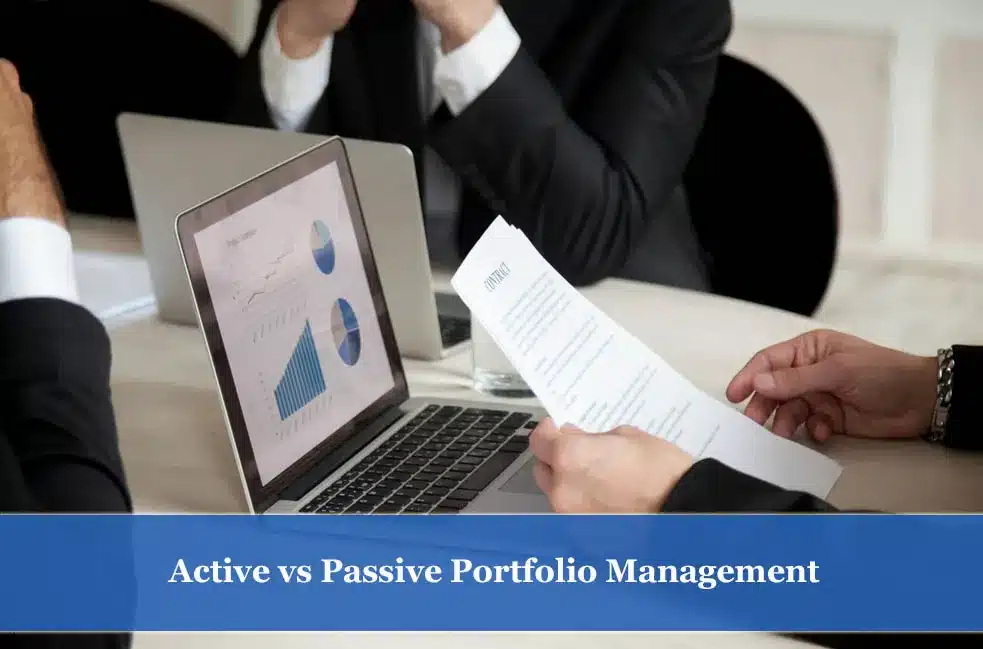Individuals with a high net worth (HNWIs) have a substantial amount of liquid assets available for investment, not counting personal belongings such as primary homes, collectibles, or everyday items. Their substantial wealth often qualifies them for exclusive financial services and investment options that aren’t accessible to the typical investor. Although the criteria for being labeled as an HNWI can differ based on the financial institution and geographic location, it’s commonly understood as those possessing a minimum of one million US dollars in investable assets. Given their distinct financial standing, these individuals frequently benefit from customized financial planning that includes areas like estate management, tax optimization, and privileged investment avenues.
The insights you’ll discover from our published book will help you integrate a variety of wealth management tools with financial planning, providing guidance for your future security alongside complex financial strategies, so your human and financial capital will both flourish.
Clients frequently share with us how the knowledge gained from this book helped provide them tremendous clarity, shattering industry-pitched ideologies, while offering insight and direction in making such important financial decisions.
Table of Contents
- What is High Net Worth Portfolio Management?
- What elements are found in portfolio management?
- Active vs Passive Portfolio Management
- Portfolio Management Tips for HNWI
- Mistakes to avoid during Portfolio Management

What is High Net Worth Portfolio Management?
High Net Worth Portfolio Management (HNWPM) is a specialized financial management technique tailored for those with extensive monetary assets. At its core, this discipline is holistic, ensuring that each financial move is made with the broader wealth context in mind. It’s not just about the transactional aspects of buying and selling but about crafting a financial blueprint that navigates the intricacies of significant wealth.
The demand for HNWPM stems from the fact that individuals with large assets often confront financial situations quite distinct from the average investor. Their financial landscape is broad, covering a range of investment opportunities, international assets, varied revenue sources, and occasionally complex liabilities. Conventional portfolio management strategies may overlook these unique characteristics. Hence, HNWPM isn’t solely about enhancing returns but also about recognizing and catering to the distinct requirements, tastes, and hurdles inherent in managing vast wealth.

What elements are found in portfolio management?
1. Tax Planning
Tax Strategy plays a pivotal role in managing sizable portfolios, particularly for High Net Worth Individuals (HNWIs). The reason being, substantial investments frequently carry considerable tax ramifications. Through adept tax strategy, HNWIs can navigate in compliance with tax regulations while effectively reducing their tax burdens. They might opt for investments that provide tax incentives, delay taxes, or leverage the benefits of reduced long-term capital gains rates. Ultimately, the aim is to retain a larger portion of the investment returns and decrease tax outlays, optimizing the overall returns on their investments.
2. Diversification
Diversification is a cornerstone principle of investment. It means spreading investments across different types of assets (like stocks, bonds, and real estate), various sectors (technology, healthcare, finance), and diverse geographical regions (U.S., Europe, Asia). By doing so, the risk associated with the portfolio is spread out. This is crucial because, in the financial world, different assets and regions often don’t move in tandem. For instance, if one sector or region faces economic challenges, another might be thriving. Diversifying ensures that a downfall in one area doesn’t heavily impact the entire portfolio.
3. Asset Management
Asset Management is more than mere trading activities. It encompasses a regular review of portfolio assets, taking into account factors such as prevailing market dynamics, individual asset performance, and shifts in broad economic indicators. This approach guarantees that investments are in sync with established goals, whether they lean towards capital appreciation, income generation, or a mix of the two. For those with high net worth, asset management can also mean delving into distinct investment avenues, like private equity or venture capital.
4. Rebalancing
As time progresses and assets perform variably, the structure of a portfolio might deviate from its original design. The act of rebalancing is the process of restoring the portfolio to its predetermined asset distribution. For example, if stocks outperform bonds over a certain duration, their share in the portfolio will grow. To rebalance, one would need to sell a portion of these stocks and purchase more bonds to return to the targeted allocation. Periodic rebalancing ensures the portfolio consistently aligns with the investor’s desired risk level and goals.
5. Risk Management
Each investment inherently carries certain risks. The practice of Risk Management methodically approaches the task of recognizing, assessing, and responding to these uncertainties. This process begins by pinpointing potential hazards, whether they stem from market fluctuations, shifts in interest rates, global political events, or other elements. After these threats are identified, their potential consequences and likelihood are evaluated. Subsequent to this analysis, measures are adopted to lessen their impact. This might mean diversifying assets, employing financial instruments for hedging, or steering clear of especially risky investments. For individuals with high net worth, adeptly navigating risk is vital to safeguard and enhance their considerable assets.

Active vs Passive Portfolio Management
In the realm of investment strategies, two of the most debated approaches are active and passive portfolio management. Both have their merits and drawbacks, and the choice between them is often dictated by an investor’s goals, risk tolerance, and preference regarding hands-on involvement. Let’s delve deeper into the nuances of these approaches:
Active Portfolio Management
- Definition: Active portfolio management involves a dedicated manager or team actively making investment choices with the goal of surpassing a set benchmark index.
- Engaged Strategy: Unlike its passive counterpart, active management requires continuous oversight. Portfolio managers dive deep into market metrics, delve into research findings, evaluate economic signals, and stay updated on company-related news to decide whether to buy, retain, or sell assets.
- Expense Considerations: The hands-on nature of active management – encompassing research, thorough analysis, and regular trading – often results in elevated fees. These could be direct management charges, trading fees, and potential tax consequences due to regular trading.
- Prospect of Amplified Returns: The main attraction of active management is the potential to earn returns exceeding the benchmark. Yet, it’s pivotal to recognize that this opportunity carries increased risks and outperforming the benchmark isn’t assured.
- Adaptability: Active managers possess the liberty to diverge from their benchmark index’s assets. This freedom allows them to capitalize on specific market trends or protect the portfolio against forecasted market declines.
Passive Portfolio Management
- Definition: Passive portfolio management, synonymous with index fund investing, aims to construct a portfolio that reflects a specific market index. Instead of trying to outperform the index, the objective is to emulate its results.
- Simplified Approach: After configuring the portfolio to match an index, there’s limited activity in terms of buying or selling unless changes occur within the index itself. Thus, it requires minimal day-to-day decision-making based on market fluctuations.
- Cost Benefits: The less hands-on nature and the decrease in frequent transactions make passive management a more economical option for investors. This cost efficiency, especially the lower fees, is appealing to budget-minded individuals.
- Steady Returns: Although passive management doesn’t chase market-beating returns, it offers stability. Investors can anticipate returns that mirror the performance of the chosen market index.
- Openness: Given the strategy’s objective to mimic an index, investors have a clear understanding of the portfolio’s contents. This offers clarity about the assets within and the rationale behind their inclusion.

Portfolio Management Tips for HNWI
Navigating the intricate landscape of portfolio management for High Net Worth Individuals demands a sophisticated approach tailored to individual requirements, evolving market conditions, and strategic diversification.
Strategic Personalization
- Significance: Each HNWI embodies distinct financial aspirations, risk thresholds, and temporal frameworks.
- Implementation: It’s imperative to architect a portfolio blueprint that aligns seamlessly with the individual’s nuanced financial objectives. For instance, an early-stage investor might have a higher risk appetite compared to someone transitioning into retirement, who might emphasize wealth preservation.
Asset Class Diversification
- Significance: Concentrated investments in singular asset classes or sectors can unduly amplify portfolio vulnerabilities.
- Implementation: Allocating capital across diverse asset channels, from equities to fixed income, acts as a risk-mitigation lever, cushioning the portfolio from isolated market volatilities.
Exploration of Alternative Investment Avenues
- Significance: Conventional investment instruments, though foundational, represent just a segment of the broader investment universe.
- Implementation: Venturing into alternative assets, such as real estate or private equity, can enrich portfolio diversity and unlock alternative revenue streams. Such alternatives often present distinct risk-return dynamics, offering a strategic counterbalance.
Tax-Efficient Portfolio Design
- Significance: Tax liabilities, if not astutely managed, can erode portfolio yields.
- Implementation: Periodic portfolio audits to evaluate and optimize tax implications can amplify net returns. This might encompass leveraging tax-preferential structures or integrating tax-efficient investment modalities.
Systematic Portfolio Rebalancing
- Significance: Asset allocation proportions can deviate over time due to market oscillations.
- Implementation: Regular portfolio recalibration ensures alignment with the foundational investment paradigm. This might entail capital reallocation following pronounced asset performance.
Robust Asset Security Protocols
- Significance: In an era of heightened digital interfacing, asset security becomes paramount.
- Implementation: Instituting rigorous cybersecurity measures, encrypted communication conduits, and insuring tangible high-value assets ensures comprehensive asset protection.
Engagement with Industry Experts
- Significance: The complexity inherent to HNWI financial management necessitates specialized expertise.
- Implementation: Partnering with domain-specific financial consultants, taxation specialists, and investment analysts can provide invaluable insights, refined strategies, and ensure optimal wealth trajectory.

Mistakes to avoid during Portfolio Management
- Overconcentration: This pertains to allocating a disproportionate amount of your portfolio to one particular asset or a cluster of related assets. While investors may have deep convictions about specific investments, overly concentrating funds in a single sector increases vulnerability to risk. Should that chosen asset or sector underperform, it can lead to notable losses in the portfolio. Conversely, diversifying investments across various assets can provide a buffer against volatility and may lead to more consistent returns in the long run.
- Ignoring Tax Implications: Taxes play a vital role in determining the actual returns of your investments. For instance, selling an asset might lead to capital gains tax, which could reduce your net profit. Without a well-thought-out tax strategy, investors may find a substantial part of their returns lost to taxes. Being proactive about understanding the tax implications of investment decisions is crucial for optimizing returns.
- Following Trends Blindly: In the world of investing, it’s common to hear about the “next big thing” or a hot trend. However, chasing trends without doing proper research can be a recipe for disaster. Not every trending investment opportunity is suitable for every investor’s risk tolerance, goals, and portfolio structure. It’s essential to thoroughly research and consider whether a trendy investment aligns with your long-term strategy before jumping in.
- Neglecting to Review: The financial market is dynamic, and both global and local events can influence asset values. As such, what might have been an optimal portfolio structure a year ago might not be the best today. Regularly reviewing your portfolio helps in identifying assets that are underperforming or no longer align with your investment goals. Adjusting your portfolio accordingly ensures that you’re always positioned optimally based on current market conditions and personal financial objectives.
- Overlooking Fees: The true value of an investment isn’t solely determined by its returns but also by its associated costs. Various fees, such as management and transaction charges, often accompany investments. As time progresses, these fees, even if they seem minimal at first, can compound and eat into your overall returns. Being vigilant and informed about all the costs tied to your investments is crucial to ensure maximum financial benefit.
- Bypassing Expert Consultation: The internet is flooded with financial information, and while many have a basic grasp of the investment landscape, there’s a marked distinction between common knowledge and specialized expertise. Seasoned professionals in portfolio management are backed by extensive training and real-world experience. Their nuanced understanding can guide you through the complex terrain of investment, particularly for those with significant assets. Engaging with their expertise can pave the way for sharper investment insights and choices.
By understanding and implementing these principles, HNWIs can ensure that their wealth is not only preserved but also grows optimally over time.
Frequently Asked Questions
How does High Net Worth Portfolio Management differ from standard portfolio management?
High Net Worth Portfolio Management addresses specific needs such as tax optimization, estate planning, alternative investments, and more complex diversification strategies tailored for substantial assets.
Why is diversification crucial for HNWIs?
Given the large sums involved, HNWIs can face substantial risks if their assets are overly concentrated. Diversification spreads this risk across various investments, reducing potential losses from any single underperforming asset.
Are alternative investments a common recommendation for HNWIs?
Yes, many HNWIs diversify into alternative investments like real estate, hedge funds, private equity, and commodities, which can offer both potential higher returns and additional diversification benefits.
What role does tax planning play in High Net Worth Portfolio Management?
For HNWIs, optimizing for taxes can result in significant savings, given the larger sums involved. Efficient tax strategies can prevent unnecessary wealth erosion due to tax liabilities.
How often should HNWIs rebalance their portfolios?
The frequency varies based on individual goals and market conditions, but generally, it's advisable to review and potentially rebalance a portfolio semi-annually or annually.
Related Post:
- Ultra High Net Worth Wealth Management – Wealth management is a crucial aspect of financial planning, becoming…
- High Net Worth Investment Firms – In the world of wealth management, high-net-worth (HNW) investment firms hold…
- High Net Worth Retirement – Navigating the complexity of high-net-worth retirement is a concern that…
- Ultra High Net Worth Financial Advisors – Among ultra-high-net-worth financial advisors, two types are generally recognized…




















































